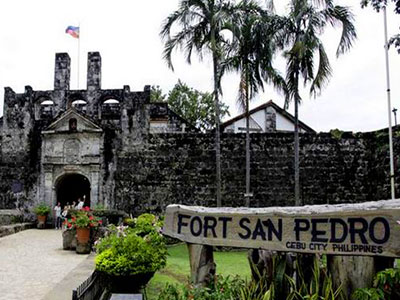
Fort San Pedro, situated in Cebu City, Philippines, is a significant historical and cultural landmark. Established by Spanish conquistador Miguel López de Legazpi in 1565, it is the oldest and smallest triangular bastion fort in the Philippines. The fort was built to serve as a military defense structure against indigenous rebels and Muslim pirates. Its construction involved the efforts of Spanish soldiers and local Cebuano laborers.
The fort’s design features a triangular layout with two sides facing the sea and the third side facing the land. Its walls are made of coral stones, and the structure includes three bastions: La Concepción, Ignacio de Loyola, and San Miguel. These bastions were strategically placed to provide a strong defense and housed cannons to fend off attackers.
Throughout its history, Fort San Pedro has served multiple purposes. During the Spanish colonial period, it functioned as a military garrison to protect against invasions. In the early 19th century, it was used as a rebel stronghold during the Philippine Revolution against Spanish rule. Under American occupation, the fort was converted into a school, then a hospital, and later as a military camp during World War II under Japanese control. After the war, it briefly became an army camp before being restored and preserved as a historical site.
Today, Fort San Pedro operates as a museum, showcasing a range of artifacts that narrate Cebu’s rich history. Visitors can explore its well-preserved walls, towers, and interiors, where historical documents, photographs, and relics from the Spanish colonial era are displayed. The museum also features a collection of Spanish-era cannons and sculptures, providing insight into the fort’s defensive capabilities and its role in the broader context of Philippine history.
The fort’s lush inner courtyard, filled with plants and trees, offers a serene environment that contrasts with its storied past. This area is often used for cultural events and gatherings, further cementing Fort San Pedro’s status as a living monument of Cebu’s heritage.
Fort San Pedro is not only a testament to the historical military architecture of the Spanish colonial period but also a symbol of Cebu’s resilience and historical significance. Its preservation allows visitors to step back in time and appreciate the rich cultural and historical tapestry of Cebu and the Philippines.
Related Tours:
